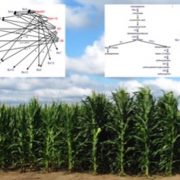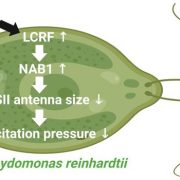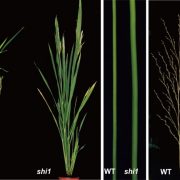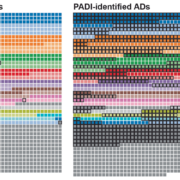Look at those red, ripe, and yummy strawberries; Thanks FaRIF!
By Carmen Martín-Pizarro and David Posé, Instituto de Hortofruticultura Subtropical y Mediterránea (IHSM), Universidad de Málaga-Consejo Superior de Investigaciones Científicas.
Background: Strawberry (Fragaria ´ ananassa) is one of the most important fruit crops worldwide, with a unique flavor and aroma and a high nutritional value that are acquired as the fruits ripen. During ripening, fruits soften and increase their levels of sugars, vitamins, the compounds responsible for the aroma, and anthocyanins, the pigments responsible for their red color. Different plant hormones participate in the regulation of strawberry fruit ripening, abscisic acid (ABA) being the major promoting ripening factor. Besides phytohormones, a few transcription regulators (transcription factors) are also known to be involved in specific aspects of strawberry fruit ripening. However, transcription factors with broader and more general roles over the course of ripening are still unknown.
Question: We identified a transcription factor, named FaRIF, whose levels dramatically increase during strawberry ripening, being therefore an excellent candidate to play an important role controlling this process. To study the role of FaRIF in the regulation of strawberry fruit ripening, we generated transgenic lines silenced for FaRIF by RNA interference or with increased expression, either constitutively or specifically in the strawberry fruit. We used fruits from these lines to study in detail the effects of altering FaRIF expression on different ripening parameters.
Findings: Our results showed that FaRIF is essential to positively regulate ripening of strawberries, controlling different key processes such as cell wall degradation, and therefore fruit softening, as well as the biosynthesis of anthocyanins, sugars, and volatiles. We also established that FaRIF controls the expression of genes involved in the biosynthesis and signaling of different phytohormones, including ABA, and that FaRIF regulates basic aspects of energy metabolism such as the aerobic/anaerobic metabolic balance, which is known to play an important role in the onset of strawberry fruit ripening. Therefore, FaRIF is an excellent biotechnological target for future modification in order to control the quality and shelf life of strawberries.
Next steps: We next wish to study the mechanisms by which FaRIF regulates strawberry fruit ripening through the identification of protein partners and the genes whose expression is directly controlled by this transcription factor.
Reference:
Carmen Martín-Pizarro, José G. Vallarino, Sonia Osorio, Victoriano Meco, María Urrutia, Jeremy Pillet, Ana Casañal, Catharina Merchante, Iraida Amaya, Lothar Willmitzer, Alisdair R. Fernie, James J. Giovannoni, Miguel A. Botella, Victoriano Valpuesta, David Posé (2021). The NAC transcription factor FaRIF controls fruit ripening in strawberry. The Plant Cell. https://doi.org/10.1093/plcell/koab070










